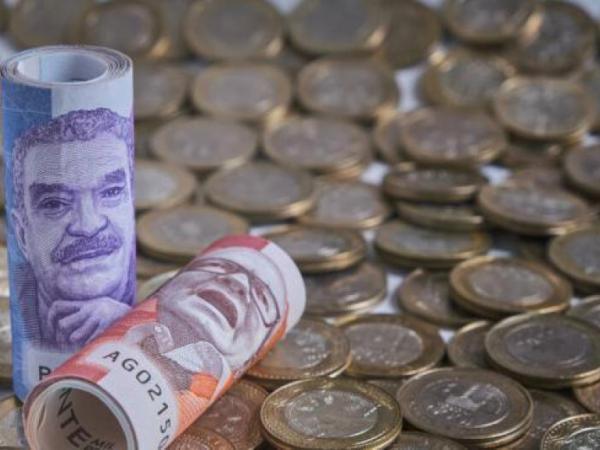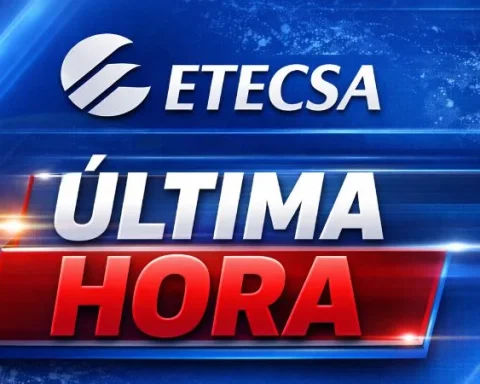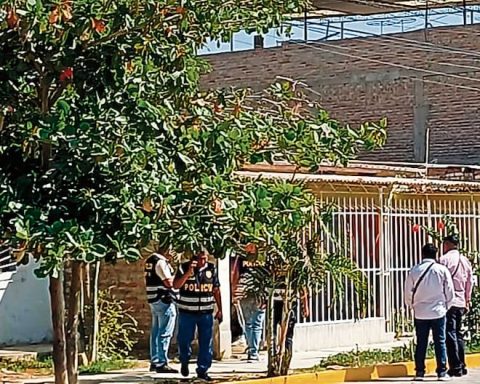The Royal Academy dictionary defines the term ‘cutting’ as the act of “cut off what is left of something.” Everything indicates that the Ministry of Finance is among them, which last week confirmed the rumors according to which There is an unprecedented scissoring in government spending.
(Read more: Where is the Colombian economy going? 10 keys to understanding its direction)
The reason is simple. Contrary to what official projections said a year ago, state revenues have performed very poorly. As a consequence, there is no choice but to take out the knife to avoid cash flow problems and maintain the confidence of the markets regarding the country’s ability to keep its house in order.
According to statements given by the head of the portfolio, Ricardo Bonilla, the Government is examining the issuance of a decree that in a matter of days will determine a decrease of 33 billion in Executive expenditures scheduled for 2024. The sum results from the 20 billion that were suspended last May, to which another 13 would be added that are in the process of being identified.
Observers such as Luis Fernando Mejía, from Fedesarrollo, think that such an amount would fall short of needs. “It is likely that we will have to go further,” says the expert.
(Read more: Inflation in Colombia: this is how the figure has fallen in 18 of the last 19 months)
Because of this, the adjustment would not end there. Those who know about these matters maintain that, as things are going, the administration would stop executing an additional 30 billion pesos before the end of December. The Economic Research area of the Bank of Bogotá estimates that, in total, the squeeze will amount to 63.8 billion pesos, which is not a small sum.
Put another way, this amount is equivalent to 15 percent of what had originally been allocated for the operating and investment chapters. Although there is a third line in the budget – that of public debt service – only in the first two there is room for maneuver.
As can be imagined, this perspective has numerous entities on high alert. Even if the objective is not to affect those areas considered priorities by the Casa de Nariño, No one is going to be completely saved for one reason: there is no money.
Many are beginning to feel the situation firsthand. People who will not have their contracts renewed until further notice, suppliers whose accounts receivable cannot be fulfilled or programs that will have to be reduced in scope due to circumstances are more the norm than the exception now.
And nothing suggests that the near future will be easier. A quick look at the data leads to the conclusion that the challenges in 2025 will be even greater due to this year’s outstanding balances, additional commitments and an economy that is running at a mediocre pace.
Apart from the above, the country is going through unknown territory, since Congress did not issue next year’s budget, therefore the Executive will do so through a decree. Contrary to those who believe that this would give more autonomy to the Petro administration, this constitutional power becomes a double-edged sword that, misused, would cause a major crisis with repercussions that could well extend until the end of the decade. .
(See: ETFs, investments that are booming in Colombia: why?)
Ricardo Bonilla
César Melgarejo/ CEET
The answer
Faced with such a hole, The Ministry of Finance was forced to react. Folding your arms would have implied a significant increase in the state deficit, which would have far exceeded the limit imposed by the fiscal rule established in a law of the Republic.
Although there is no shortage of voices that say that breaking the rule is not that serious, just look at the behavior of the exchange rate in recent weeks or the premium that Colombia pays in its debt securities compared to their Latin American peersto conclude that the greater perception of risk is accompanied by proportional costs. In some cases, these are assumed by the population that is forced to pay for more expensive imported products or services or by the treasury itself, which is better off going into debt.
Entering a vicious circle of larger balances in the red that are covered with more expensive obligations that in turn deepen the shortfall is, clearly, undesirable. The region is full of examples of nations that went down that path and ended up impoverished, with inflationary phenomena that lasted for years.
This is not about ideology, but about respecting basic economic principles. As a professor of the subject during his career at the National University and throughout a life dedicated to the study of this scienceRicardo Bonilla is aware that we must keep the reins short.
For this reason, since February a cut was suggested, the foreseeable size of which grew month by month to the extent that collection goals were missed one after another. Convincing the high Government, from the President on down, has not been easy and even less because of the conviction of some, according to which the continuity of the Historical Pact in power depends on increasing public spending.
Due to this, the way to comply with the fiscal rule combines explicit cuts, along with the strategy of turning off the tap so that the flow of expenses is restricted to the essential minimum. The Underrun Strategy distinguishes between the budget commitment and the payment obligationsomething that requires constant monitoring by the Ministry of Finance, which ends up acting like the bad guy in front of the others. Ultimately, it is about reducing primary spending by about 40 percent during the last four months of the year, compared to the same period in 2023.
(See: How is the discussion of the financing law progressing? This was explained by the Mininterior)

The alternatives to invest your money.
iStock
Games in the air
From a formal point of view, at the end of December a decree will end up being issued that closes the current budget year and will leave many items up in the air. A portion would be pending by 2025, although this will depend on the decree that will define the new budget and the lines that are required.
What is already a huge headache is complicated because it is not yet known what the amount of the government spending program will be next year. The starting point is the 523 billion pesos that the Executive proposed at the end of July. But, of these, 12 billion are contingent on the approval of the Financing Bill that remains on the congressmen’s agenda.
To make matters worse, in either of these two scenarios there is talk of tax collections exceeding 300 billion pesos that sound, They seem unlikely in light of the evidence. To put it frankly, improving tax revenues by about 20 percent in 2025 sounds unrealistic, so the movie of cuts will have to be repeated amid pressures that combine with the arrival of the electoral season.
But until that moment arrives, it is worth emphasizing that the indications of recent days have been a cause for hope. “We would have an unequivocal signal regarding the intention to comply with the fiscal rule this year”says Camilo Pérez, director of Economic Research at Banco de Bogotá.
According to the analyst, the news regarding the decree that would cut spending by 33 billion during the current term increases the probability that the public deficit will not exceed the established limits. This explains the behavior of the exchange rate and the profitability of debt bonds on Friday, which would reflect a lower perception of risk.
That said, what’s coming will not be easy at all. “By 2025, the Government will have used all its tools, which include not only the aforementioned cuts, but other instruments such as postponing tax refunds to taxpayers or not paying certain energy subsidies that will become payable next year,” adds Perez.
How extendable the tactic of reducing here and postponing there is is something that will be seen in due course. For now, the important thing is that without making too much noise, and against many of his colleagues within the cabinet, The Minister of Finance does what is within his power so that there is no debacle in the management of public accounts.
There is no doubt that dangers abound due to the decisions and commitments that would be made if, for example, health reform goes ahead. The draft legislative act deserves special mention. that seeks to redistribute the resources that are transferred to the regions and that, according to its critics, would lead the Colombian State to bankruptcy.
However, just as each day brings its excitement, in the short term the balance looks somewhat better than what was believed just a few weeks ago. And that, in today’s complex Colombia, is no small thing.
(See: December premium in Colombia: can you request an advance on your payment?)
RICARDO AVILA
Special for EL TIEMPO

















